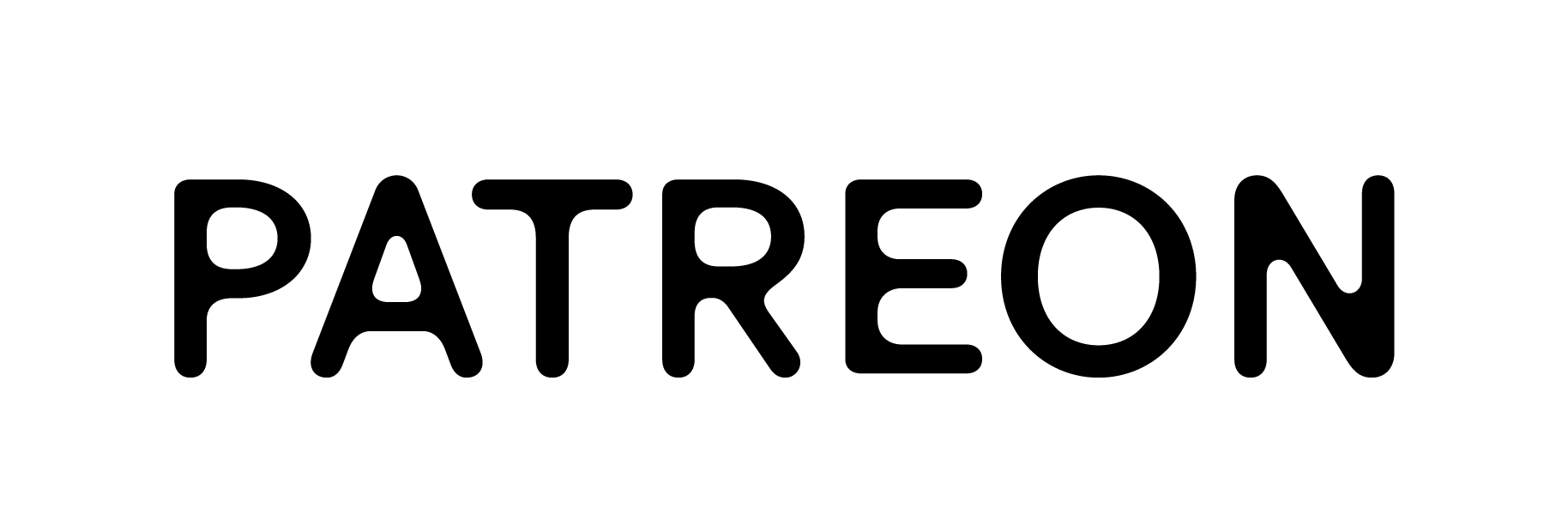How do you push the tail forward when your knee doesn't bend that way?
How on earth does the board spin forward and stay under you?
I mean, even if you want to kick out your board, your knee bends backward, not forward. So you shouldn't be able to generate enough energy to push the tail forward.
So there must be hidden science behind it. Let's break it down with whythetrick.
Summary
Shift your weight on the heel side BEFORE popping
Having your weight on the heel side allows you to both push the tail forward and land on the heel side without having to do so intentionally.
Your board lands on your 7~8 o'clock
As a result of pushing the tail forward, the heel side wheel of the rear truck becomes a pivot point and your board swings out to the heel side.
Have your shoulders fixed
Opening your shoulders while jumping up gives your board additional spin. But having your shoulders open the whole time does not. Make sure to have them at a fixed angle and don't change their angle. You don't necessarily have to keep it parallel to your board.
Simulation
Hit the icon to initiate 3d simulation.
Physics
Push forward and pop down the tail
Before discussing how to do it, let me explain the physics of this trick first and show you why this trick is possible.
In order to spin your board, you have to apply horizontal energy to the tail. In addition to the horizontal force, you also have to pop down the tail and let it hit the ground.
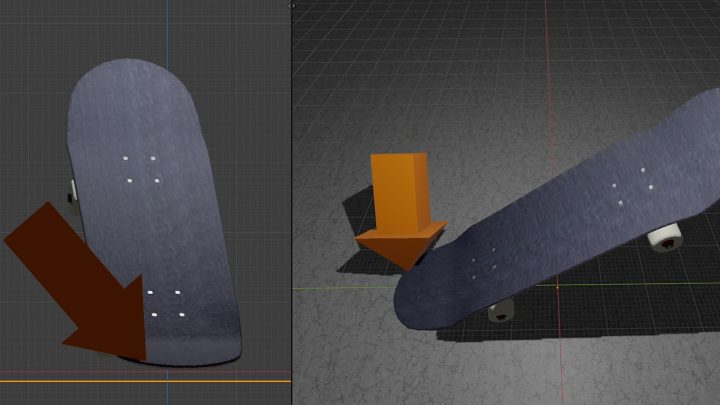
Simulation - premises
Let's see what happens when you apply such a force to your board using a physics simulator.
Here, we have a skateboard on a direction indicator that looks like a massive clock. And we are going to drop this white ball on the heel side pocket of the board.
A green line indicates the ball's horizontal location, and a black line indicates its trajectory.
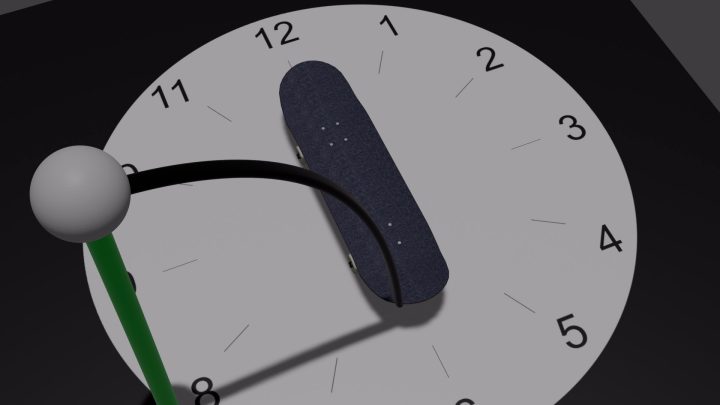
Simulation - result
As you can see, the board seems to land at around 7 to 8 o'clock from its original location.

Simulation - breakdown
As a result of popping down the tail diagonally downward, the heel side wheel of the rear truck becomes a pivot point.
Since the front part of your board has a bigger mass, your board will swing out and land on your 7 o'clock.

Simulation - summary
So, according to physics, you have to do two things:
- Give your board a horizontal spin and vertical pop down.
- Move your body to the heel side by the time your board completes a rotation.
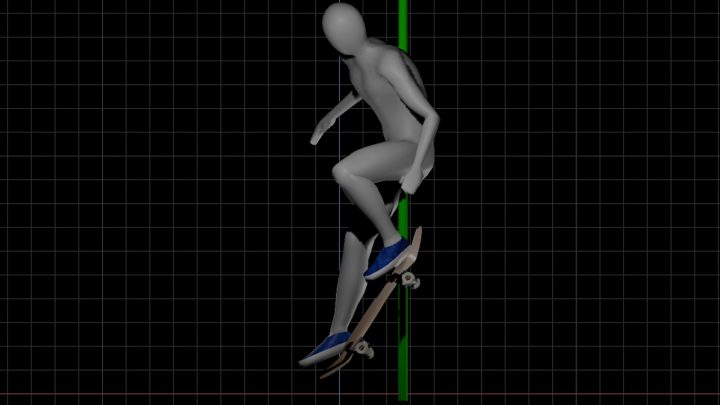
Execution
How to push the tail forward
Now the question is how to apply force forward when your knee doesn't bend that way.
Simply put, having your weight on the heel side BEFORE popping allows you to both "pop the tail forward" and "move your body to the heel side." Let's break it down a bit more.
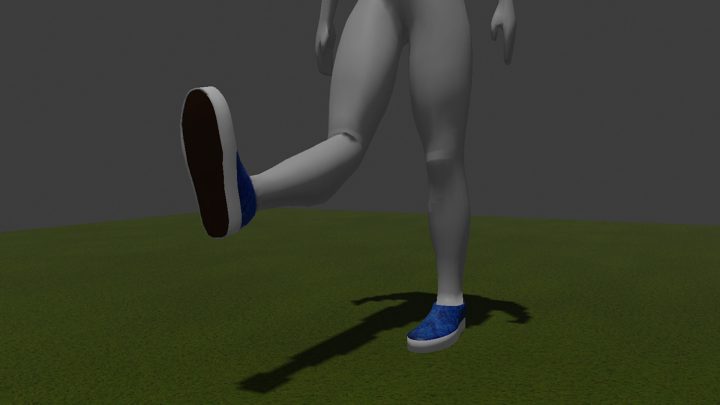
Impact of having weight on the heel side on your body's trajectory
Imagine when your body's center of mass is on the heel side, and you are jumping straight upward.
Because of the difference between the center of mass and the point of action (in this case your back foot) you'll launch your body to the heel side without having to jump backward intentionally.

Impact of having weight on the heel side on your board's trajectory
Simultaneously, for the same reason, you will push the tail forward. Again you don't have to do so intentionally.
It is a product of your body weight on the heel side and popping the tail straight down.

Foot placement
Backfoot on heel side, frontfoot on toe side
Again, the heel side wheel of the rear truck becomes a pivot point.
So, you can pop the tail more effectively by placing your back foot closer to it, which, in this case, is the heel side pocket.
With your back foot on the heel side, having your front foot on the toe side allows you to keep your body weight above your board.
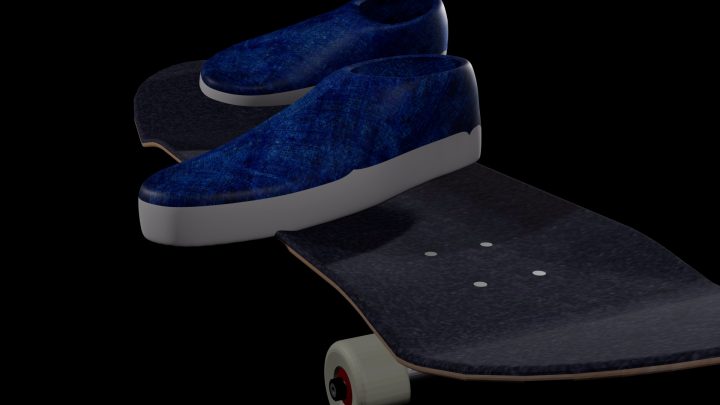
Practice
Practice while rolling
I recommend doing it while rolling. This way, you can easily avoid letting it hit your shin.
Move slowly and place your feet just like we discussed. Start shifting your weight on your 7 o'clock and pop the tail.
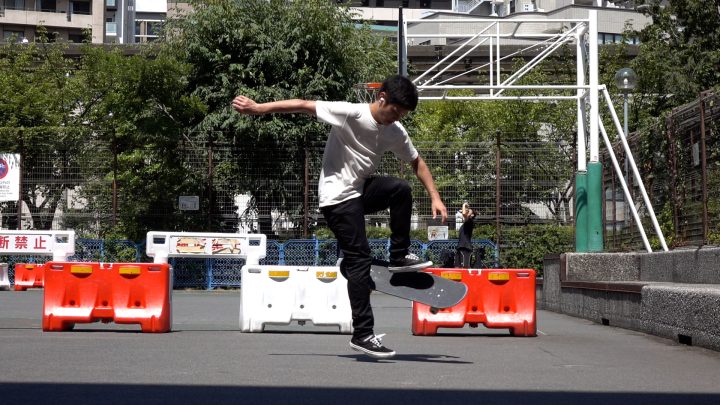
Learn how to spin your board before landing it
At first, you don't have to try to land on your board. Just try spinning your board and see how it works.
Practice spinning your board and know exactly how far back you should lean your body weight.
Remember, you have to have your weight on your 7 o'clock. Try different weight distributions. You might want to move it toward your back foot or heel side.

Shoulders
Opening your shoulders while jumping up turn your board
Let's talk about one more thing: shoulders.
In front side pop shove-its, try not to swing your shoulders unlike front side 180s.
In front side 180s, you actually use the motion of your shoulders.
But in front side pop shove-it, your board spins due to the difference between your body's center of mass and point of action.
So swinging your shoulders is not only not needed but also might mess with your balance.
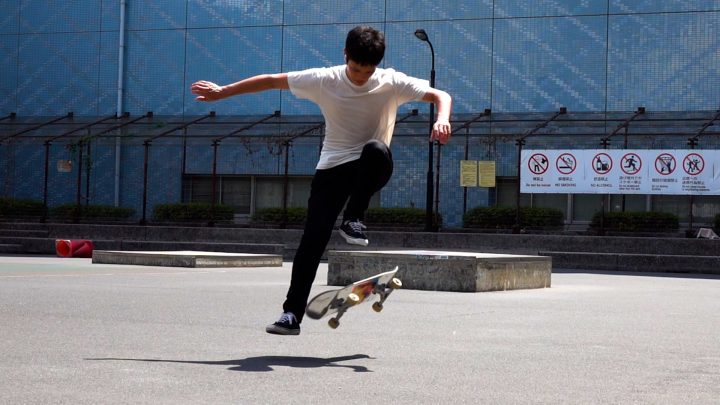
Do you really have to keep your shoulders parallel to your board?
Whenever they talk about the angle of shoulders, they always say you should keep it parallel to your board, but I say against it.
Although opening your shoulders while jumping up might give your board additional spin, having your shoulders at a certain angle the whole time does not.
This is just like I said in the Ollie tutorial.
So have your shoulders in a way you feel comfortable and DON'T change their angle while you jump up.
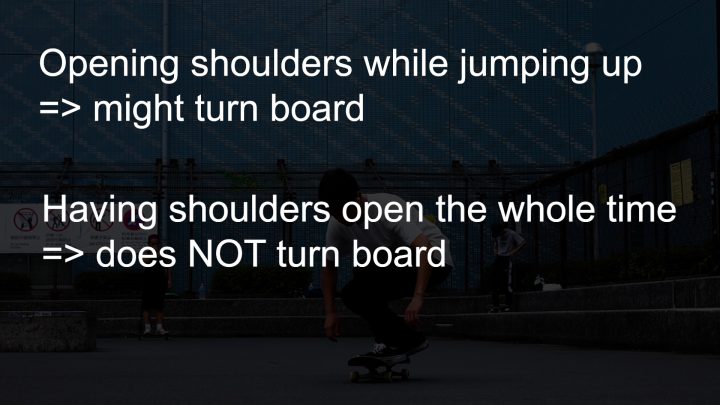
Next step
Start landing on your board
Once you feel comfortable spinning your board and know exactly where it will go, try landing it with both feet.
We should cover more topics such as: how to avoid flipping your board and what to do when your board flies away. Let's talk about them in the following content.
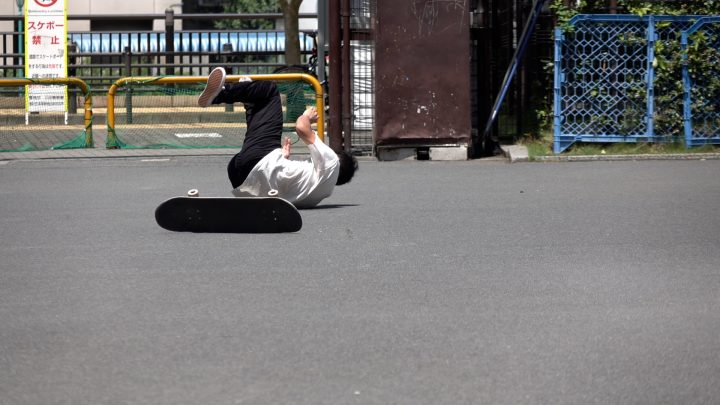
Tips
Let's study the trick further in detail.
Proceed from the links below.
Trouble Shooting
Let's study the trick further in detail.
Proceed from the links below.
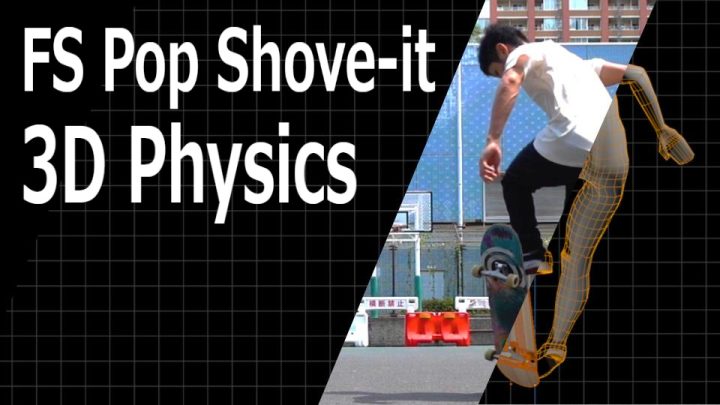

 Convert your video into 3D
Convert your video into 3D Facebook
Facebook Twitter
Twitter



